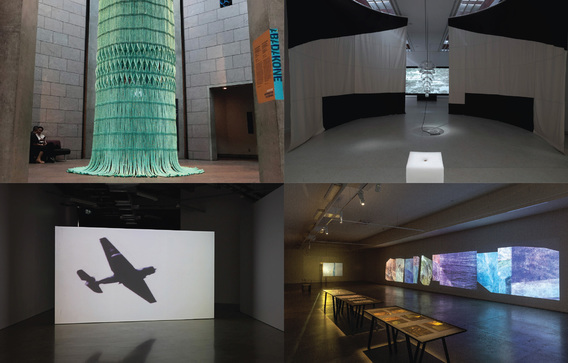
R
E
V N
E
X
T
Auckland Art Gallery Toi o Tāmaki is currently closed because of Covid-19, but its activities continue. On April 8, artworks by Mata Aho Collective, Fiona Amundsen, Sonya Lacey, and Sriwhana Spong, addressing issues of tradition, effects of history, and how information travels, were announced as contenders for the Walters Prize 2020. An exhibition for the all-female finalists will be presented at a later date, from which a winner will be selected, to be awarded with a cash prize of NZD 50,000 (USD 30,510).
Mata Aho Collective’s 2019 site-specific installation AKA at Ottawa’s National Gallery of Canada is a towering 14-meter weaving of steel and marine rope made using the traditional whatu (finger twining) method, evoking both the ocean and the Māori deity Whaitiri. The artists, Erena Baker, Sarah Hudson, Bridget Reweti, and Terri Te Tau are known for their collaborative works that highlight Indigenous culture and practices.
Auckland-born and based Fiona Amundsen’s A Body That Lives (2018) is a series of documentative photographs and videos of personal stories that explore historical traumas linked to World War II in the Asia-Pacific. Combining both images of the past and the present, Amundsen, who is known for her works which showcase how painful experiences live on, construct historical accounts that go beyond the official records.
Wellington-based Sonya Lacey’s video installation Weekend (2018) imagines a swimming pool as a place of socialization and relaxation for print workers, by washing sheets of newspaper until the content becomes indistinguishable—a process of translation and mediation that peeks into the fluidity of information systems as well as access to them. The artist’s practice focuses mainly on communication, its multiple forms, and impacts.
London-based Sriwhana Spong, who grew up in New Zealand, was nominated for her Now Spectral, Now Animal (2019–20), inspired by the writings of 16th-century nun St Teresa of Ávila, who was recognized by the Catholic church in 1970 as the first female Doctor of the Church for her literary contributions. The video and mixed-media installation spotlights forgotten narratives, questioning how history is shaped through the courses of time.
Held biennially since 2002, the jury members of the tenth edition of New Zealand’s largest contemporary art award are: Allan Smith, curator and senior lecturer at Elam School of Fine Arts at University of Auckland; Nathan Pohio, (Ngāti Māmoe, Ngāi Tahu), artist and assistant curator of Christchurch Art Gallery Te Puna o Waiwhetū; Melanie Oliver, curator of Christchurch Art Gallery Te Puna o Waiwhetū; and Charlotte Huddleston, director of St Paul St Gallery at Auckland University of Technology.
Dates for the prize exhibition are yet to be confirmed.
Ashlyn Chak is an editorial intern of ArtAsiaPacific.
To read more of ArtAsiaPacific’s articles, visit our Digital Library.














